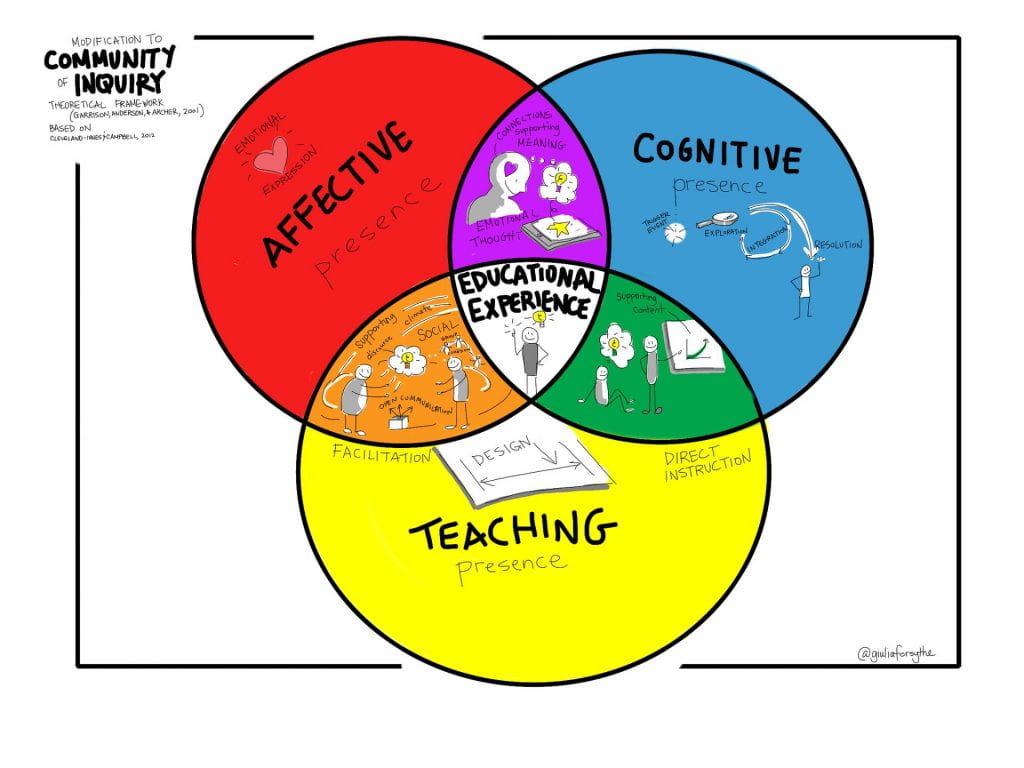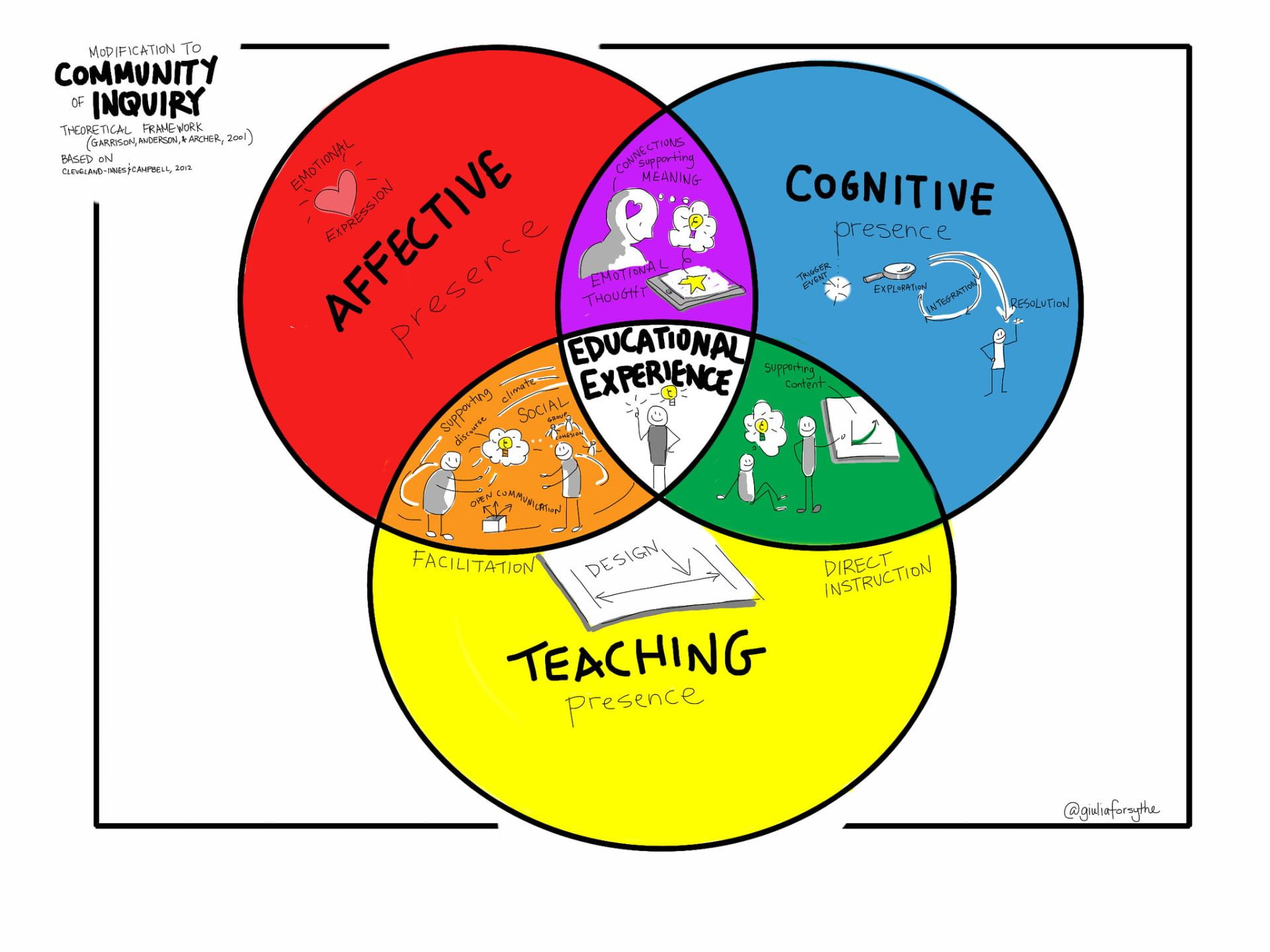Introduction
Humans are innately social, most people need others to share ideas with, to learn from, and to generally engage with while learning.
Links to the Exemplary Module Framework
Section 7 – Active and Social Learning: “Make use of online activities and peer interaction to motivate active and social learning supported by the collaborative and communication tools“.
In “Communication“ we’ve already noted the very close links between this and Section 4 – Communication and Interaction – one is needed to allow the other to happen. Today, therefore, we’ll try to concentrate more on the learning experiences of students.
In Blend Your Module, we looked at different learning types and experiences. Social learning is very much of an experience, so we will particularly focus on these two learning experience types.
Getting to know each other – developing the nascent community
Online icebreakers are sometimes a challenge; it can be hard to find things that work, but do not challenge students to engage with things they may find challenging. For example, a popular activity for some “2 truths and a lie” can be very challenging for others. These are some of the ideas that we know staff are working on around the University.
- Buddies – could you get students to buddy with each other (e.g 2nd/3rd years buddying new students, or students forming buddying groups
- Speed Friending – put students into random groups in Collaborate – give them 5 – 10 minutes to chat, then return to the main room. Repeat as needed. Idea from Stavros Kourtidis, Business School.
- “Treasure hunts” In the School of Education, they’ve sent out information about the course, student support etc, in advance. Students have to find key facts in that, in groups, in live sessions – under time limitations.
- Which Harry Potter character are you? Another idea from the School of Education – introduce yourself as a Harry Potter character, and say why.
And some other ideas
- Ideas for engagement – A Padlet that was created during a Playful Learning Workshop, do any grab your interest?
- Community Building Online – this is an ongoing resource of activities to help students develop online communities. It’s curated by Equity Unbound and OneHE – both groups who’re focussed on equity for all in education.
- Padlet – we now have a site licence for Padlet, what might you do with this to engage students?
- Miro have shared a number of ideas for icebreakers – most of which don’t need Miro – though the monster activity is probably best done in Miro – could you convert any of the activities into Powerpoint?
Do you have any icebreakers that have worked online – share them with others in the chat!
Or, are there any things you’ve have realised haven’t quite worked – again, let us know. [Remember, you don’t have to give your own name if you prefer not to]
Active learning – the engaged student
Active learning, or student engagement is something that almost all staff have asked CTIL about.
When we ask staff about “what’s engagement”, we usually get a range of answers – answers that include both the measurable “lots of clicks on My Dundee”, and those that are much header to measure “community spirit”. Which, to you as an educator, is the more important?
A key resource covering Engagement is Mary Washington’s Refocus. As we’ve suggested in other posts, have a look at all their content on the site. In the Engagement area, we’d like to particularly look at the concepts of teaching presence, social presence and cognitive presence.
Teaching presence, the structure and organisation of a module is something we’ve already focussed on in earlier posts. You’ll have structured the module to fit the requirements of the Module framework – which covers much of this aspect.
Social presence, as well as thinking about the community development we mention above, this is also covered in the Communication posts – and again, supported by the Module Framework.
Cognitive presence. How can we scaffold the learning activities that we give students to enable them to construct meaning and understanding of the subject matter. This is the real key to engagement, yet it’s the one that’s the hardest to truly measure.
These 3 presences were developed originally by Anderson et al (1999), and are often represented as a Venn Diagram.

There is a lot of overlap between this, and Siemen’s ideas of connectivism.
From talking to staff around the University, we’ve got several suggestions of what they’ve found has already worked, or things they’re intending to do.
- Pass the question. Staff in the Medical School get students, once they have answered a question to nominate the next student – who the tutor then asks a question to.
- Concept Hunt. In Philosophy, students are given some key concepts to hunt for in the material they’re given to read.
- Cross year peer tutorial groups: In the Dental school, they’re hoping to have students from different years working as a group on a case study.
What activities might you do that would support students developing their own understanding of their learning? If you’re concerned that your students don’t have effective online study habits, LJ Logue (from SSEN/ CTIL) has put together a padlet to support students in developing effective study habits (you’ll may even get some ideas for yourself!)
Accessibility and Legal considerations
As always, you should ensure that activities are accessible by all students, and that you’re not requiring students to share information that may be personal under GDPR. The activities listed on the Equity Unbound site are particularly useful for ideas that should work with all students.
Resources
Relevant 101 sessions
Other LearningX series
- learning footprints – looking at the information you leave online as you progress through your learning
External Resources
Active Learning while Physically Distancing – Salim, Z. (2020). Active Learning while Physically Distancing 2.0. The Aga Khan University. Licensed under CC-BY-NC-SA. This work is a derivative of Baumgartner, J. et. al. (2020). Active Learning while Physical Distancing. Louisiana State University. Also licensed under CC-BY-NC-SA.
Interesting ways to support online learning(Library login required), This book by Rhona Sharpe has long been a staple of an online tutor. There are many suggestions in here – which you may find useful for ideas for engaging students with each other.
Over to you
We’ve not actively asked you to contribute in some of the intermediate posts, but now you’ve read them all, have a look at the ideas you had following the first post. Have your ideas changed? Have you any new ideas?

